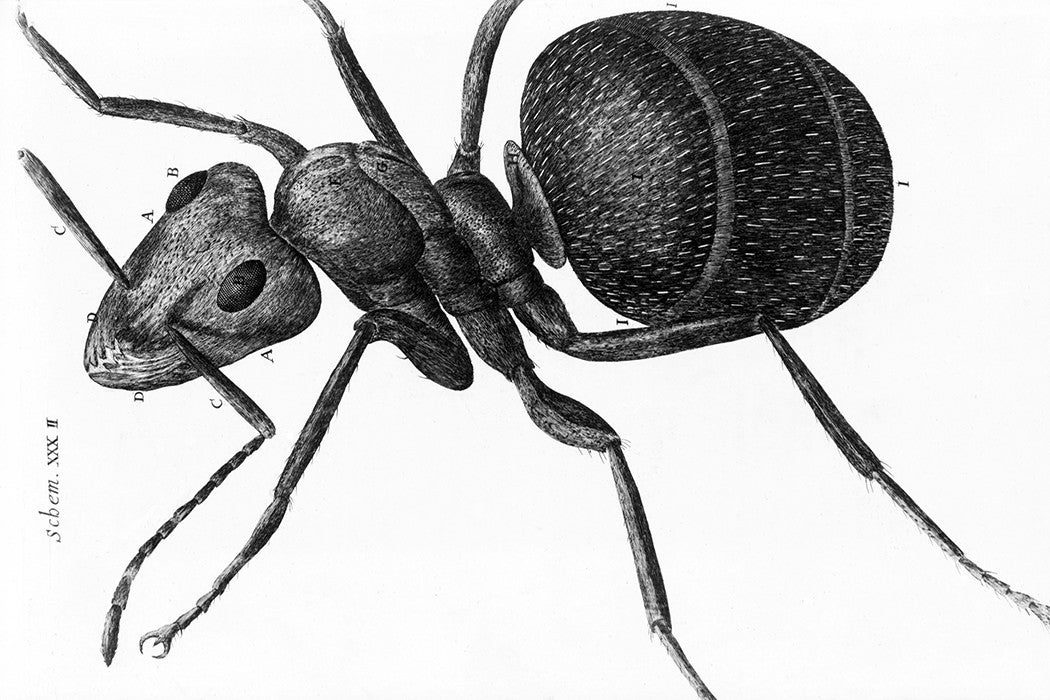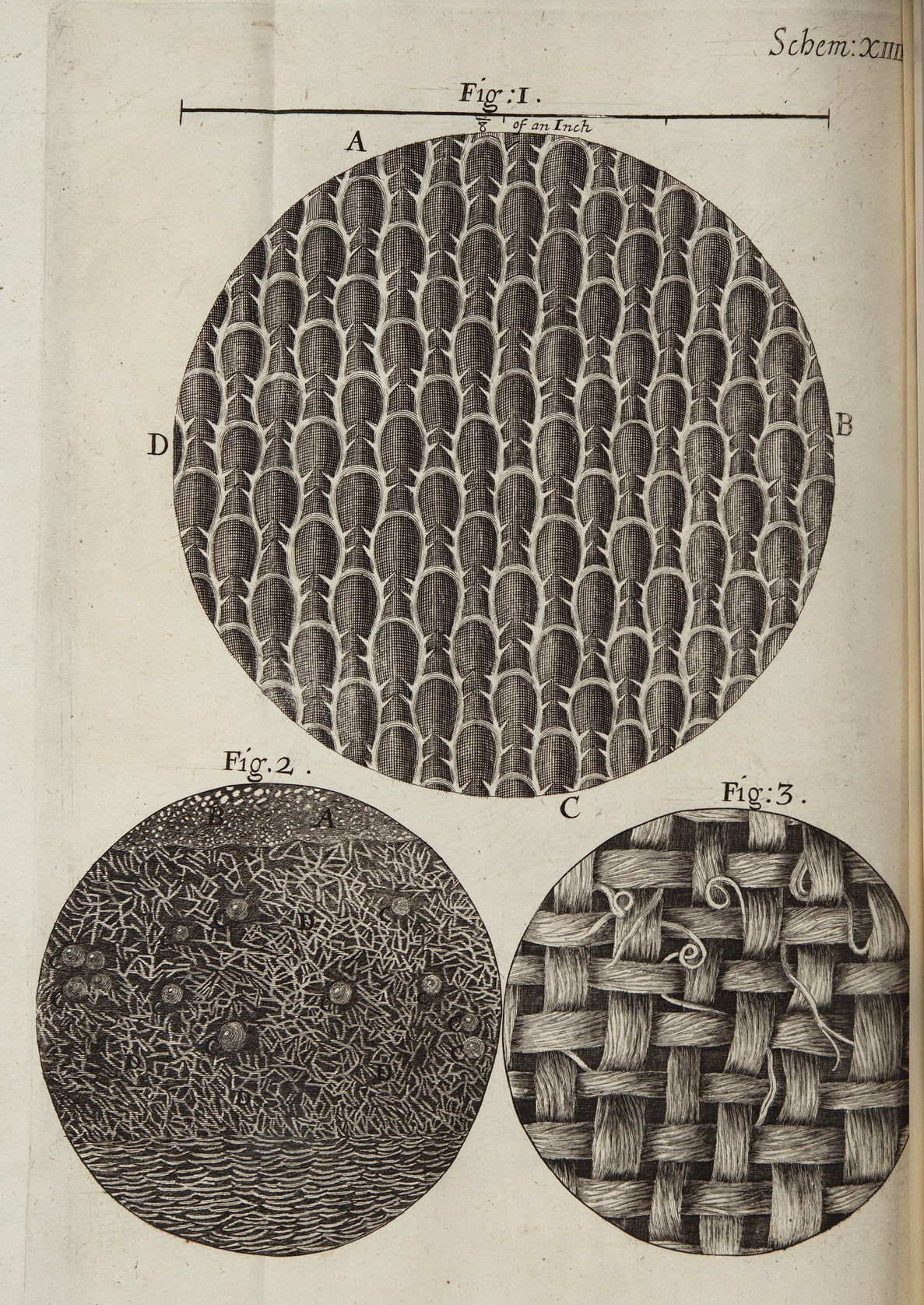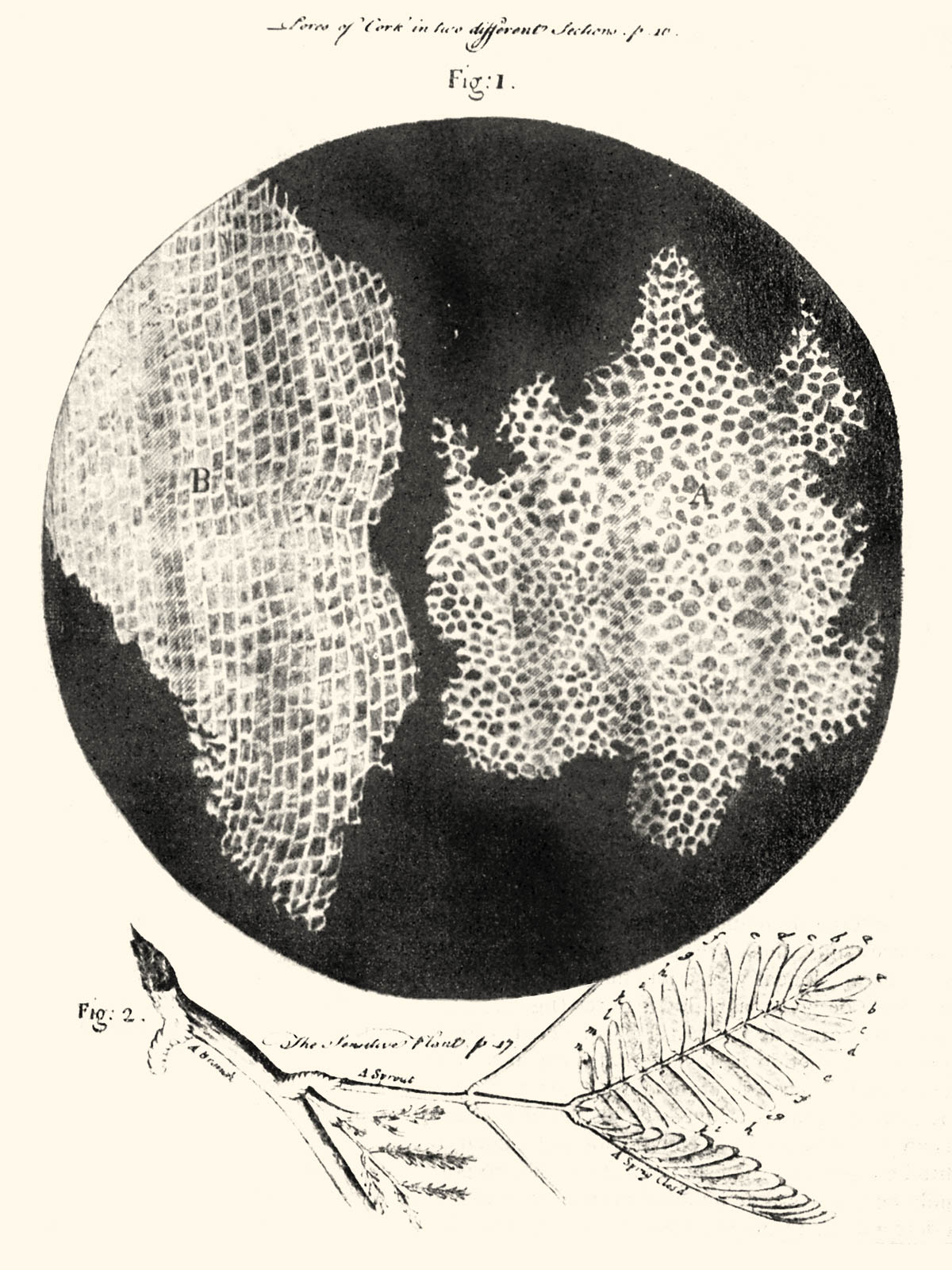In January of 1665, natural philosopher Robert Hooke, the Royal Society of London’s curator of experiments, published Micrographia, a magnum opus of scientific illustration. Based on Hooke’s observations about plants and insects, Micrographia contained close-up engravings of ants and honeycombs and sketches of flies’ eyes. These drawings showed astounding details that were impossible to see with the naked eye. In many cases, magnification was required simply to observe the organisms, let alone sketch them. Micrographia was an immediate bestseller.
Hooke brought a revolutionary perspective to his descriptions of nature. In Micrographia, the order of the natural world was carefully sketched and beautifully illustrated, thanks to Hooke’s use of a relatively new scientific instrument: the microscope. With its powerful magnifying lenses, the microscope allowed Hooke to make scientific observations at completely new levels of detail. Reflecting on his discoveries, Hooke wrote in Micrographia:
The texture of Cells of Cork and of some other frothy Bodies could not be so curious, but that possible, if I could use some further diligence, I might find it to be discernable with a Microscope. Me thinks, it seems very probable, that Nature has in these passages, as well as in those of Animal bodies, very many appropriated Instruments and contrivances, whereby to bring her designs and end to pass, which not improbable, but that some diligent Observer, if helped by Microscopes, may in time detect.
There are few scientific instruments as iconic as the lensed microscope and its cousin, the telescope. Both were products of the early seventeenth-century scientific revolution, and both instruments extended the visual range of the observer. One extended our eyes deep into outer space and the other down into the minutiae of the world writ small. In other words, thanks to their lenses, these instruments expanded what a person could physically see, which in turn meant observations based on the authority of a first-hand account of natural phenomena, be it the moons of Jupiter or the hairs on a flea’s leg. Although both instruments had earlier predecessors, their use during the late sixteenth and early seventeenth centuries made lenses an integral part of observing nature, establishing the scientific precedent for coupling observation and instrument.
Flat and translucent, lenses are some of the most versatile tools in the history of science. Generally made of glass, lenses focus light through a disc, offering the observer a magnified view of an object. The oldest lens comes from the world of seventh-century Assyria, and is known in archaeological circles as the Nimrud lens. Archaeologists and historians believe that the Nimrud lens was used either for magnification or as a glass to start fires (or both). By the first century BCE, Romans, like Pliny the Elder, commonly used lenses to focus light on a specific spot, igniting any combustible materials in their immediate area (these lenses were known as burning glasses).
The thirteenth century saw the advent of eyeglasses, or precursors to eyeglasses, allowing the wearer magnified eyesight. (Writer Umberto Eco alludes to the history of these early spectacles in his novel The Name of the Rose, in which he gives his character William of Baskerville a set.) When natural philosophers and craftsmen of the early modern era began grinding and polishing their lenses, they played around with a plethora of different types, weighing the optical trade-offs of different varieties.
Instruments like microscopes and telescopes depended on lenses, and lenses, in turn, depended on makers with the knowledge and expertise to manufacture them. With six different possible shapes—varying which sides are convex or concave—a lens-maker can control both how the lens will behave and what its magnification and light-gathering properties will be. Stacking lenses on top of each other allowed magnification properties to be compounded. Hence the compound microscope or telescope: lenses working in concert to mitigate distortion.
For Robert Hooke, however, the lens not only opened up a new world of observation, it literally framed the view of the natural world to which he introduced his viewers. Many of the images in Micrographia, for example, were framed by a circular outline, reminding viewers that the lens of the microscope made the image possible. “Hooke often enclosed the objects he presented within a round frame, thus offering viewers an evocation of the experience of looking through the lens of the microscope,” historian Dr. Janice Neri noted. The lens, thus, was both the instrument and the perspective.
The lens was—and is—a tool technology that helps make the invisible world visible. It offered readers of Micrographia a new perspective, both on the process of scientific observation and the natural world. “By the help of Microscopes, there is nothing so small, as to escape our inquiry,” Hooke noted. “Hence there is a new visible World discovered to the understanding”










